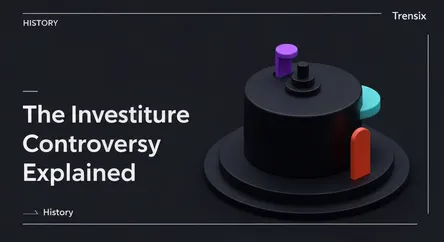History
The Investiture Controversy Explained

A look at the medieval power struggle between popes and emperors over church appointments, a conflict that forever changed church-state relations.
What is it?
The Investiture Controversy was a major conflict in 11th and 12th-century Europe between the papacy and secular rulers, most notably Holy Roman Emperor Henry IV and Pope Gregory VII. The central issue was "lay investiture": the power of kings and emperors to appoint bishops and abbots and invest them with the symbols of their office. For centuries, monarchs had used this power to install loyal followers in powerful church positions. The papacy, seeking to reform the church and assert its authority, challenged this practice, leading to a decades-long power struggle.
Why is it trending?
This medieval conflict remains a pivotal historical event because it represents a foundational battle over the separation of church and state. The arguments and principles established during this period laid the groundwork for modern ideas about distinct religious and secular spheres of authority. The controversy marked a turning point in European political development, significantly weakening the power of the Holy Roman Emperor and strengthening the authority of the pope. This shift in power dynamics had lasting consequences that shaped the political landscape of Europe for centuries.
How does it affect people?
The controversy led to nearly 50 years of civil war and turmoil, especially in Germany and Italy. The decline of imperial authority empowered local lords, which for many common people resulted in increased serfdom and higher taxes. In the long term, the conflict contributed to the political fragmentation of Germany and Italy, a condition that persisted until the 19th century. Conversely, the papacy's increased power and the engagement of lay people in religious matters helped set the stage for major events like the Crusades.